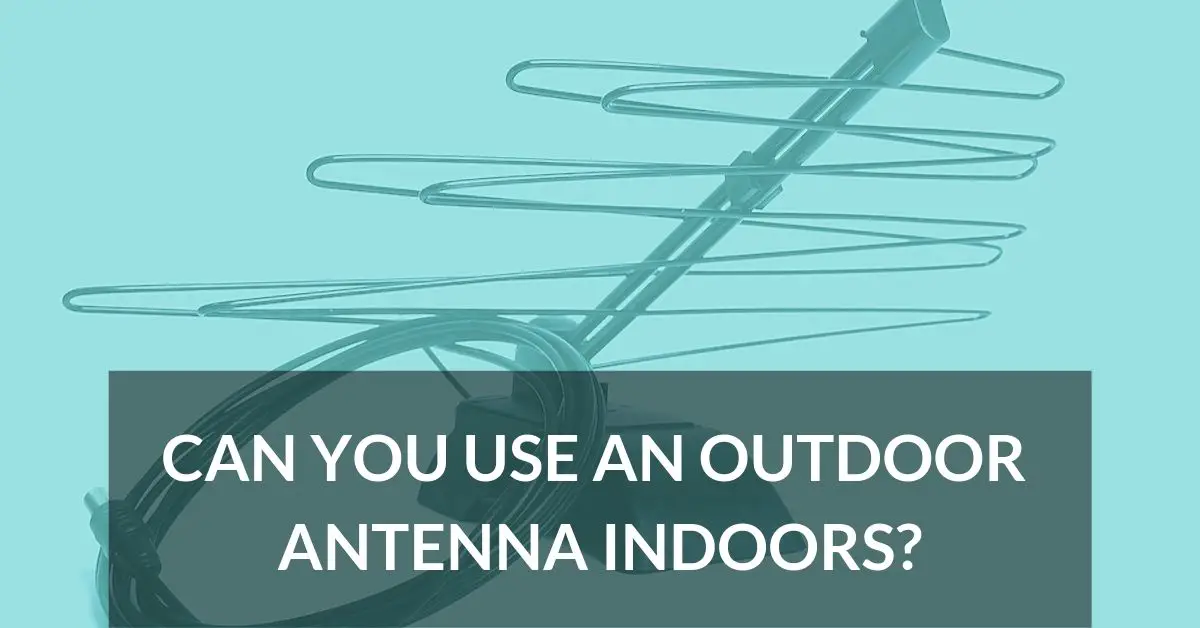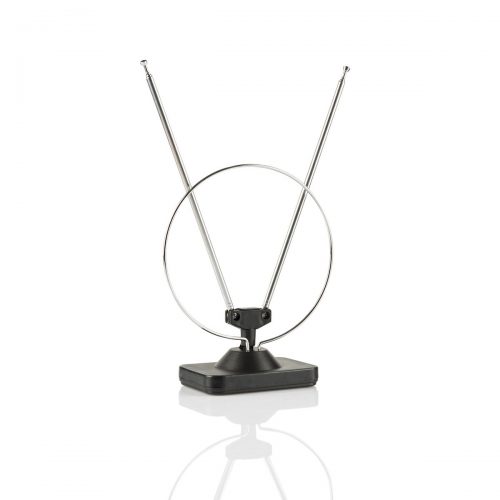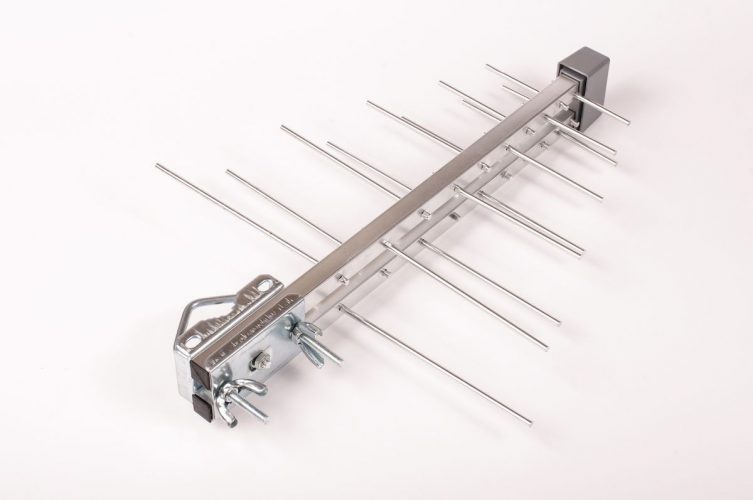
*As an Amazon Associate we may earn from qualifying purchases when you buy through links on our site.
When describing TV antennas, we often talk about form and function.
Technically speaking, indoor and outdoor antennas are made of similar receptive materials (e.g., copper and aluminium) that receive radio frequency waves moving through the air, and convert these into electrical signals that go into your television.
So in terms of function, indoor and outdoor antennas work in basically the same way.
It’s in the form, however, where they differ, and that makes a given antenna often better suited for either indoor or outdoor use (and sometimes both).
Indoor Antenna Design
For comparison, let’s look first at indoor antennas.
These tend to be small and compact, and have shorter reception ranges than the larger outdoor kinds. They also generally have a fragile construction.
The Old Rabbit Ears
A typical example of an indoor antenna is the dipole “rabbit ears” antenna that offers omnidirectional reception. That is, it receives signals from transmission towers in a 360-degree radius.

Sitting directly on top of your TV, it’s very easy to adjust the flexible metal “ears” or to spontaneously rotate the antenna to improve reception.
These kinds of dipole antennas were more popular before the advent of digital television in 2009, as they tend to pick up VHF signals (which were more heavily used in the early days of TV) better than the UHF frequencies broadcast more often today.
Modern Indoor Design
Generally built with delicate, plastic exteriors, leaf design antennas are made for cluttered household environments offering minimal space in which to fit an antenna.
Their exteriors are more aesthetic than robust, making them less resistant to outdoor environmental conditions (should you suddenly decide to mount one on your roof).
Of course today, many indoor antennas have dropped the bunny ears in favor of a solid, square shape that allows them to fit comfortably and innocuously behind the TV or by a window.
An example of these modern, square designs is the foot wide AliTEK J-001 Amplified TV antenna.
Smaller = Less Reception Range
Being smaller and having less of a profile to fit more easily in your living room does have its own cost, however.
The diminutive surface area of indoor antennas means their reception range is more limited.
In fact, they’re better suited for customers living within 25-30 miles of transmission towers.
Some modern indoor antennas offer greater ranges, however, with some even promising 100+ miles (highly unlikely in an indoor setting).
To boost their reception, indoor antennas almost uniformly come with a built-in preamplifier to overcome potential interference from walls, ceilings, and household appliances.
Outdoor Antennas
Outdoor antennas can receive TV signals from towers at greater distances away, and are built to withstand adverse climates.
They offer maximum directionality and reception power to pick up weak signals from distant sources.
For example, unidirectional antennas — such as antennas of Yagi and log periodic design — feature an elongated axis with protruding dipole elements to maximize the reception and conversion (i.e., antenna gain) of radio frequency waves into electrical signals for your TV.
The image below shows a typical log periodic antenna design.
Note the sturdy, aluminium frame of the antenna, which makes it suitable for outdoor use.

Besides the size and form of outdoor antennas, they’re often mounted outdoors at a higher elevation and thus avoid many forms of household interference that weaken signals.
One potential downside of outdoor antennas, however, is the complexity of installing them and running a coaxial cable through the house to your TV.
Setting Up an Outdoor TV Antenna Indoors
Installations of outdoor antennas indoors are actually common. There are two typical scenarios:
- Installation of an outdoor antenna in the attic: Although attic spaces are often cramped and the house structure (e.g., walls, roof, insulation, etc.) creates major interference for TV signals, many customers successfully mount outdoor antennas in attics and get decent reception.
- Usage of an outdoor antenna in a home’s living spaces: This scenario is less common than attic installations, but some people place their outdoor antennas (particularly smaller ones like the 1byone New Concept Series antenna) in their living rooms, often next to a window.
Although interior spaces of houses can create some significant interference for TV signals, an argument can be made that the superior reception features of outdoor antennas actually make them more receptive than your average indoor antenna, when used indoors.
Rather than being omnidirectional however, outdoor antennas are usually directional and line of sight to radio frequency sources, and should be aimed towards transmission towers.
These days, some brands are marketed as dual purpose; that is, for setting up either indoors or outdoors.
For example, the 1byOne Amplified VHF & UHF Combo offers sufficiently powerful reception that permits you to install it in the attic, along with a sturdy and weatherproof frame for mounting outdoors.
Verdict
Antennas tend to lose about half their receiving power when placed indoors due to interference (from house structure, home building materials, etc.), even when positioned next to a window.
This makes using an outdoor antenna indoors something of a gamble (particularly if the antenna isn’t amplified, which many outdoor antennas aren’t).
The gamble will probably work, but don’t expect it to function as well as on a mast on your rooftop.
Outdoor antennas also generally don’t possess the aesthetic qualities of an indoor antenna.
Outdoor antennas tend to be large and bulky, and those aspects that are an advantage in terms of reception power turn out to look rather disadvantageous when placed next to your sofa.
Lastly, while using an outdoor antenna indoors may provide tolerable reception, I wouldn’t recommend doing the opposite, that is, setting up an indoor antenna outside.
Indoor antennas are generally too fragile to last long in the rain, wind, and sun.


